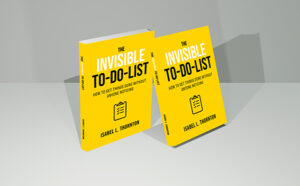Autistic burnout is not just about feeling tired or overwhelmed—it’s a deeply consuming state of mental, physical, and emotional exhaustion that affects every area of life. While many people might be familiar with general burnout, the autistic experience of burnout is uniquely complex, often misunderstood, and sorely underrepresented in mainstream discussions.
In Embracing Self-Care for Autistic Burnout we explore the raw, real stories of autistic adults navigating burnout and recovery. These stories help bridge the gap between clinical definitions and lived experience, painting a nuanced picture of what autistic burnout truly feels like.
Burnout Beyond Fatigue: What It’s Actually Like
Imagine waking up every day with your brain feeling like static—foggy, slow, and overloaded before you even get out of bed. Communication may become harder, socializing feels impossible, and even the smallest demands—like replying to a text or making breakfast—can become monumental tasks.
Many autistic individuals describe feeling like they’ve “hit a wall.” Tasks that were once manageable feel draining or unbearable. Sensory sensitivities may intensify. Emotional regulation becomes harder. It’s not just tiredness—it’s shutdown. Often, there’s a profound sense of disconnection from oneself and others.
Real Stories That Illuminate the Experience
In Embracing Self-Care for Autistic Burnout, readers meet people like Mark, a college student who spiraled into burnout after masking his struggles for years, and Sarah, who tried to “push through” an overwhelming workplace that failed to understand her sensory needs. Their experiences highlight the toll of constant adaptation and lack of proper support.
“There were days I couldn’t speak, couldn’t think straight. I felt like I was disappearing inside myself.” – from a reader review on Amazon
These lived accounts offer validation for those going through similar experiences and insight for allies and professionals trying to better understand what burnout looks like in autistic adults.
Why Understanding Autistic Burnout Matters
Understanding autistic burnout isn’t just about empathy—it’s about creating change. By acknowledging the signs and causes of burnout, we can better advocate for accommodations, design supportive environments, and implement prevention strategies. Most importantly, we can begin to deconstruct the pressure to mask, to conform, and to overextend in a neurotypical world.
Take the First Step Toward Recovery
If this post resonates with you or someone you love, dive deeper into the full range of experiences and solutions in Embracing Self-Care for Autistic Burnout. This powerful guide explores both the science and the personal side of recovery, offering strategies tailored to real-life needs.
🟣 Read the book on Amazon
💬 “Every autistic adult should read this—it gave words to feelings I couldn’t explain.” – Amazon Reviewer
Author

Laura Mitchell writes with a focus on supporting autistic adults and those navigating the challenges of autistic burnout. Drawing on personal experiences and countless conversations within the neurodivergent community, she creates resources that are compassionate, practical, and easy to follow.Her work is grounded in a belief that autistic voices deserve to be heard and understood, and that self-care should be accessible and validating for everyone. Through her books, Laura aims to provide encouragement, clarity, and strategies that help readers build lives that feel sustainable and authentic.When she’s not writing, Laura enjoys quiet routines, creative hobbies, and walking in the hills close to her country home.





